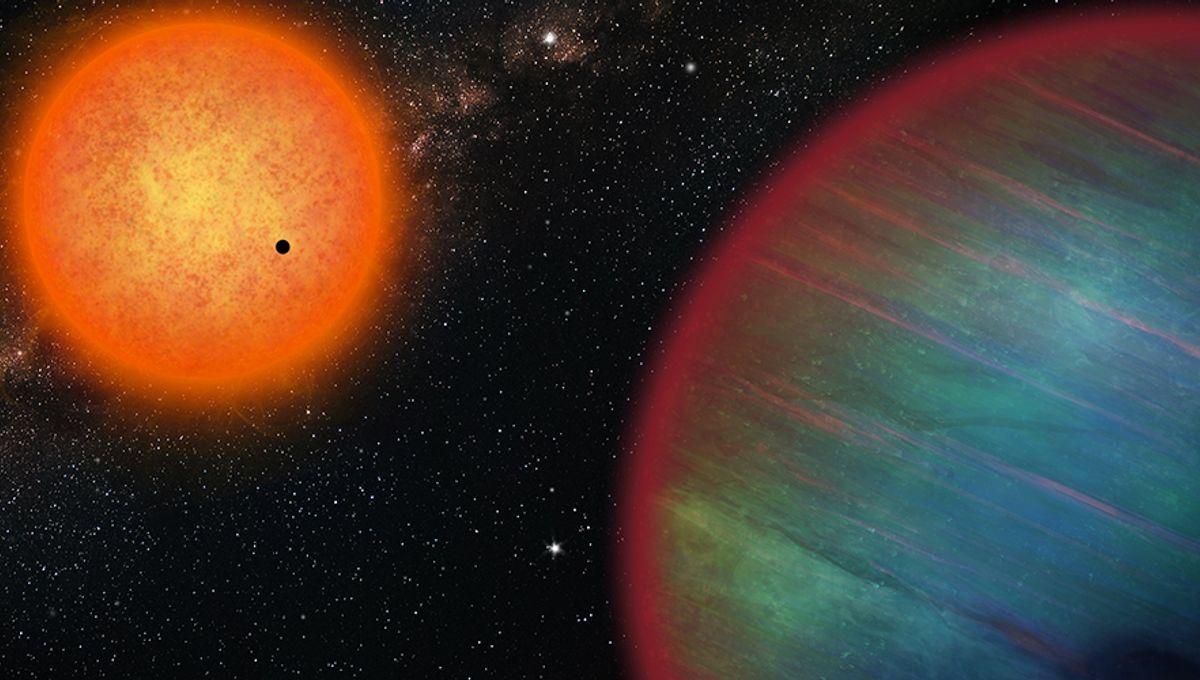
The class of planets known as “hot Jupiters” puzzled astronomers on first discovery, but rapidly led to an explanation that they had formed far out and migrated inwards. It was thought that during this process other planets in the same system would either be absorbed by the migrating giant, or ejected from the system. However, the presence of three planets around the star WASP-132 shows this is not always the case, necessitating a rethink about the formation of hot Jupiters in general.
Before we developed the technology to detect planets around other stars, many astronomers anticipated planetary systems quite like our own. Consequently, they were surprised when the first planets we found were massive – usually more so than Jupiter – and orbiting very close to their stars. The technology lent itself to detecting planets with short orbits and a great deal of gravity, so it was inevitable these would be the first we would detect, but the puzzle was they existed for us to find.
According to our models of planetary formation, gas giants can only form outside the “snowline” around a star. Hot Jupiters were explained as having formed beyond the snowline before spiraling in. The focus shifted to trying to work out why some giant planets make this migration, while others, including those in our own system, have not.
This was called into question when the TESS space telescope detected dips in WASP-132’s brightness, suggesting another planet in the system besides WASP-132b, whose 7-day orbit was an early exoplanet discovery. New work confirms TESS’s observations are caused by a rocky planet with six times Earth’s mass (a Super-Earth) and an orbit that lasts just 24 hours. Additionally, the system has a planet five times as massive as Jupiter, with an orbit lasting five years. WASP-132 is somewhat cooler and less luminous than the Sun, but the two inner planets would still be ferociously hot.
Much further out may lurk another object, which could be a brown dwarf with a tentative mass of 18 times that of Jupiter.
‘‘This is the first time we have observed such a configuration!’’ said Dr Solène Ulmer-Moll, who was at the University of Geneva (UNIGE) during the research, in a statement.
The brown dwarf is distant and massive enough that it may have influenced the planets rearrangements, without being much affected itself, but the presence of the others calls WASP-132b’s history into question.
If Jupiter had made a migration similar to the ones used to explain hot Jupiters, the consequences for Earth and the other rocky planets would be disastrous. Either we would be absorbed into its great mass, like a giant version of the comets it sometimes swallows, or its gravity would have flung us from our orbit – probably ending up in the deep cold of space. Being sent on an orbit that would eventually collide with the Sun is a less likely, but no more appealing, outcome.
Consistent with this, most known hot Jupiters appear to have no nearby planets, but exceptions have started to emerge. Nevertheless, WASP-132 is the most striking example yet found.
‘‘The WASP-132 system is a remarkable laboratory for studying the formation and evolution of multi-planetary systems. The discovery of a hot Jupiter alongside an inner Super-Earth and a distant giant planet calls into question our understanding of the formation and evolution of these systems,’’ said UNIGE’s Peter François Bouchy.
“The detection of the inner Super-Earth was exciting as it’s particularly rare to find planets interior to hot Jupiters,” said co-author Dr David Armstrong of the University of Warwick in a different statement. WASP-132 has 43 percent of Jupiter’s mass and is uncomfortably close.
The authors of the study announcing the new planets propose WASP-132b formed beyond the system’s snowline, but undertook what they call a dynamically “cool” path, meaning it maintained a relatively circular orbit throughout. By never going through the extremely elongated phase some planets in the process of becoming hot Jupiters are known to do, it would have reduced the chance of disrupting other planets.
This explanation raises the question of whether such paths are common, allowing scope for many other surviving planets, or if there is something exceptional about this system.
The study is published open access in Astronomy and Astrophysics.
Source Link: WASP-132 Proves Hot Jupiters Don’t Always Expel Their Siblings